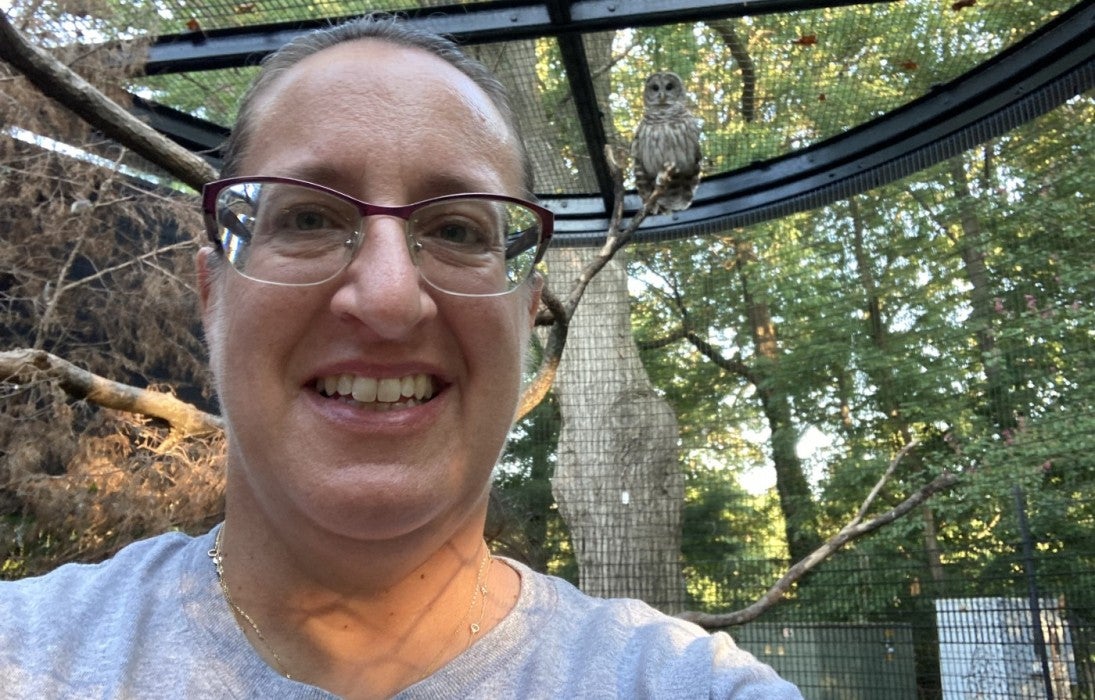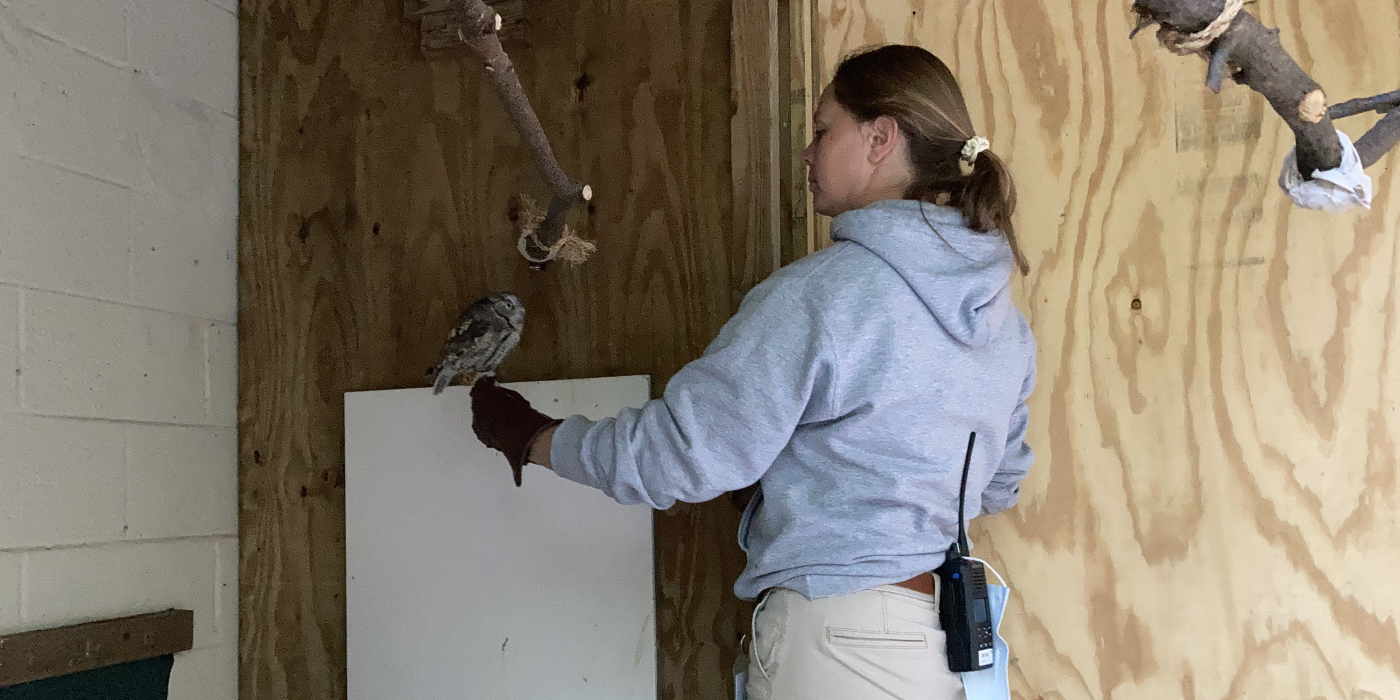How to Care for Owls
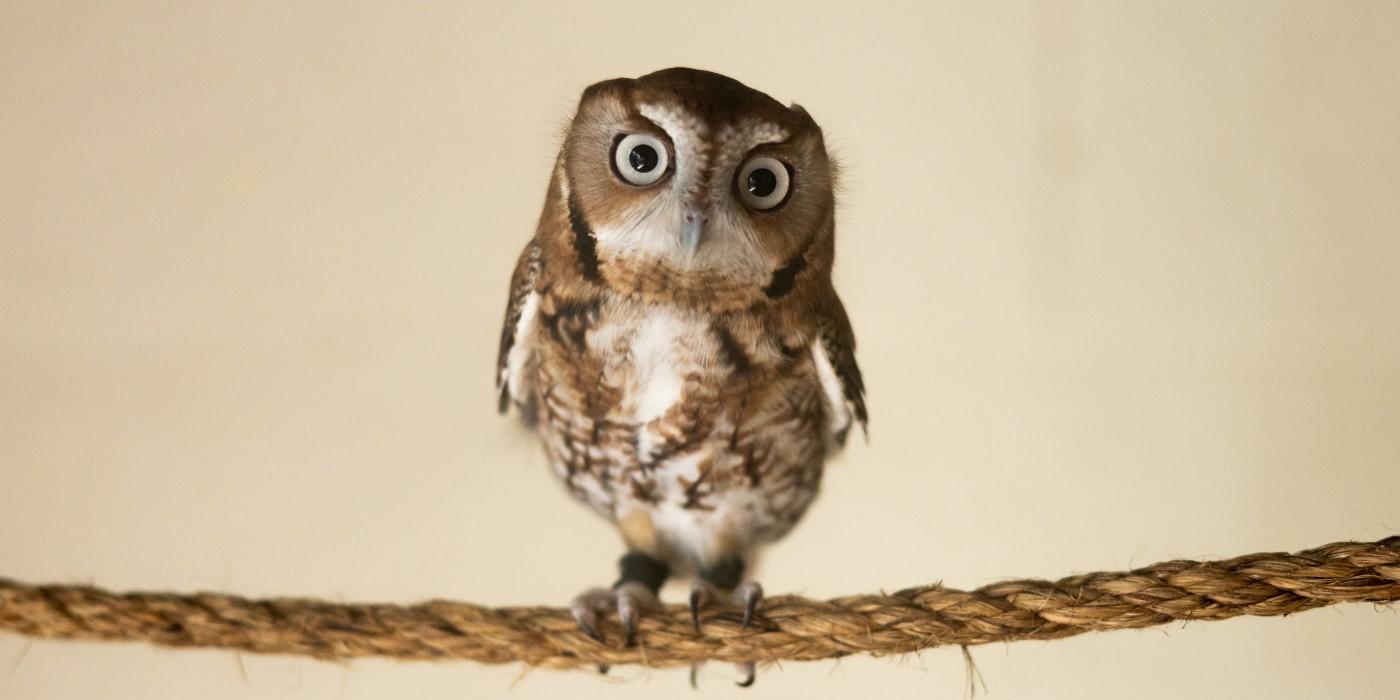
Look whoo it is! Four new sets of owl eyes have joined the Smithsonian’s National Zoo and Conservation Biology Institute family this year in Washington, D.C. Ruffling feathers at the Bird House is a pair of barred owls and swooping onto American Trail is a pair of eastern screech owls. Give a hoot for Bird House keeper Heather Anderson and American Trail keeper Jackie Spicer as they talon their stories of caring for these native owl species.
Heather: Owls look and act so regal and stately. Nothing ever gets by them. You can’t sneak up on one, but they can sneak up on you. They hear everything and see everything before you even know they are there. You could be looking right at an owl, but these animals blend in so well with their environment you might not see them!
Barred owls are from the East Coast of the U.S. More recently, they’ve spread westward, up through Canada and down into Washington state, Oregon and northern California. Watch this video and see if our barred owls, Edward and Edwina, look (or sound) familiar to you:
Jackie: Eastern screech owls are also native to the U.S. Their range stretches from the East Coast to Montana, and from North Dakota south into Mexico, east of the Sierra Madre Oriental mountains. Connecting visitors with species they can look for in their local parks or backyards is a great way to spark their interest in local wildlife.
Just like the barred owls, you may hear an eastern screech owl before you see one! These tiny owls make a whinny vocalization, similar to a horse but fainter. The calls are often described as “ghost horses.” Get an up-close look at our eastern screech owls, male Canyon and female Teton, in this video:
Heather: Owls are such a specialized and diverse bird. There are 225 owl species found throughout the world on every continent except Antarctica! Most birds are more active during the day, but owls are active dusk through dawn. They are perfectly adapted for night flight, night feeding and daytime disguise.
Edwina arrived at the Bird House before Edward. She is a cautious and attentive owl. Whenever I enter her exhibit, she goes to the opposite side and closely watches whatever I am doing. Edward is easy-going and tends to follow Edwina’s lead. So, he did the same when he first arrived.
One day, after placing their food on various perches and branches, I stepped out and happened to glance back. There was Edward—just four feet from me, getting his dinner off a branch! He startled me. I hadn’t heard him come over. Owls are known for silent flight, but to experience it in this way was amazing!
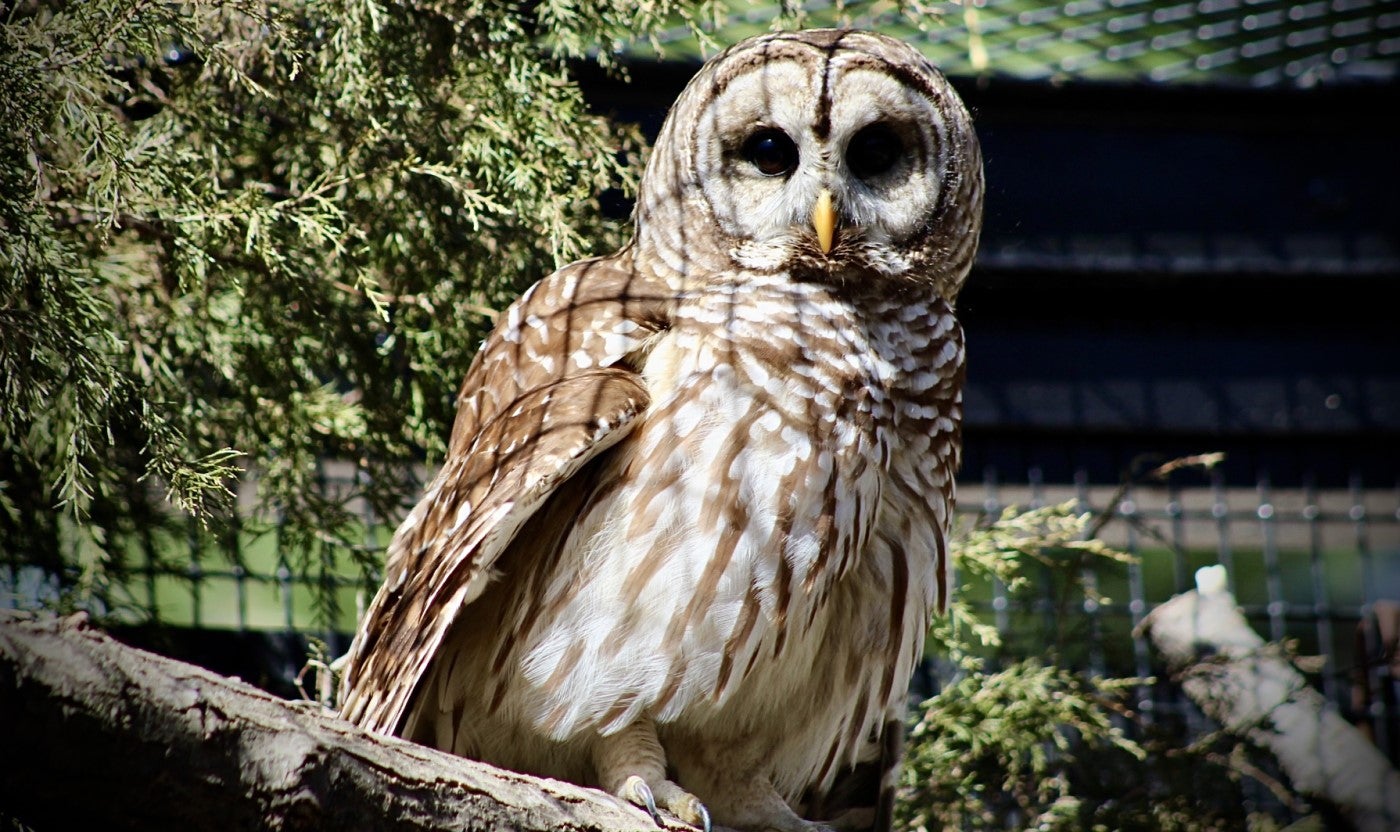
Jackie: Owls like to rip and shred things apart, including their prey. It may be a bit gross to most people, but it’s a natural behavior they enjoy. We offer Canyon and Teton enrichment that encourages this behavior, including paper and rope. The shreddable items are placed in many novel items like buckets or small rubber toys.
One major food source for owls are small mammals. Owls are natural pest controls and help keep rodent populations in check! As part of their Zoo diets, Canyon and Teton receive frozen-thawed mice four times a day.
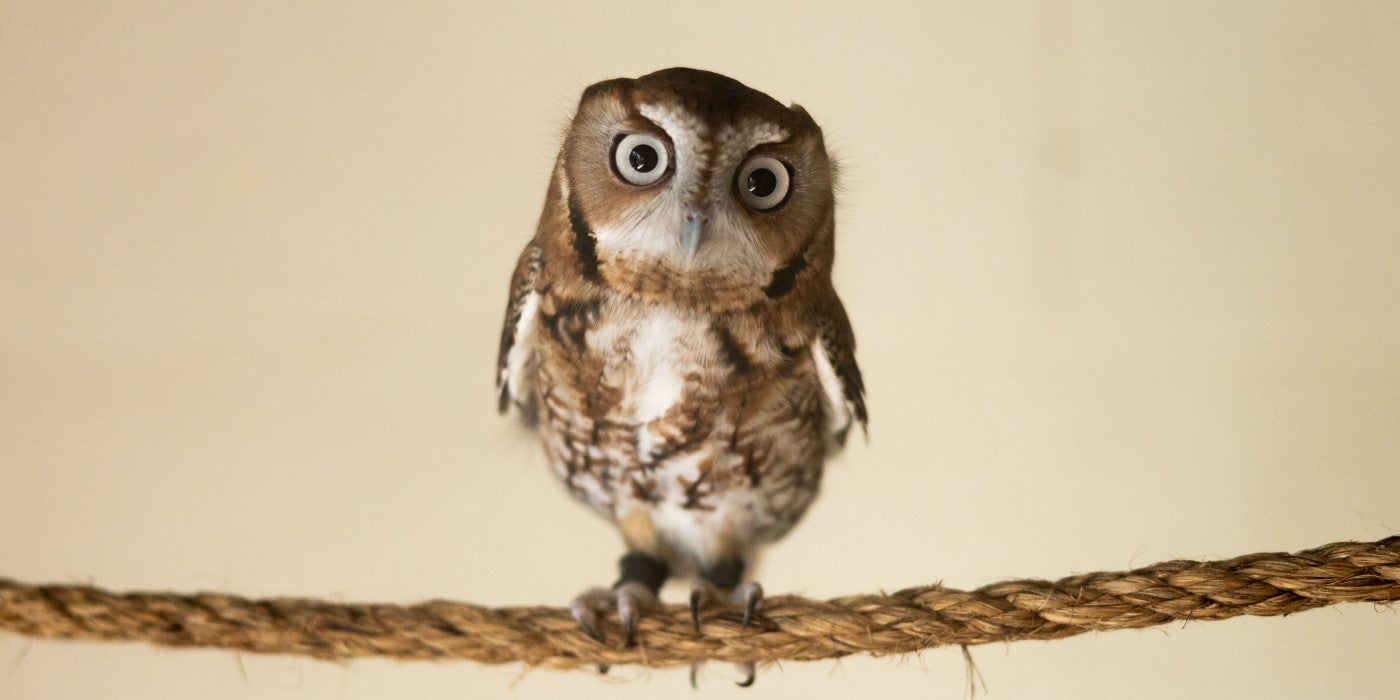
Heather: Beyond small rodents, barred owls eat crayfish, fish, reptiles and invertebrates. Edwina and Edward seem to like fish the most. Since barred and eastern screech owls are native to the U.S., we can directly help them by making our backyards animal friendly. Plant native trees, shrubs and flowers. A brush pile made from yard trimmings and clippings provides shelter to small rodents and may attract owls.
Jackie: The chemicals we put in the environment can have unintended consequences. One of the best ways to help owls is to avoid using pesticides, rodenticides or insecticides. After rodents or insects ingest the poison, they may be eaten by larger animals, including owls. This, in turn, can poison the birds.
Heather: Barred owls also roost and nest in mature, deciduous trees. So don’t cut trees down unless they cause danger to life or property. Each of us has a great deal of influence over our local and global environment. Let’s use it responsibly and be true guardians to the animals we share our world with.
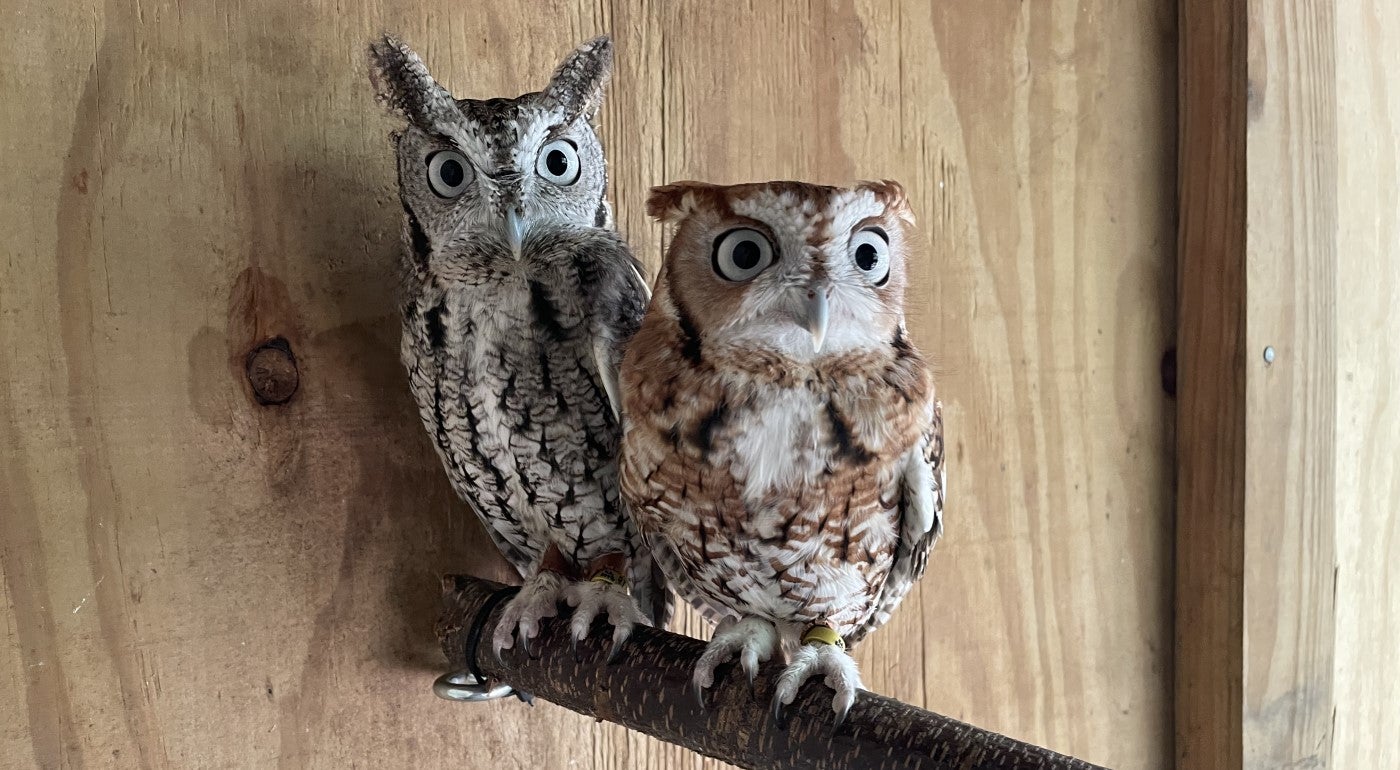
Jackie: Working with Canyon and Teton has been an amazing opportunity to learn more about their biology and expand my animal care knowledge. If you have a passion for animals, pursue your passion through volunteering at your local zoo or nature center to better understand what caring for these creatures entails. Be prepared to work hard! Caring for animals is anything but easy, but it’s also very rewarding.
Heather: For anyone aspiring to work with owls specifically, have patience. Understanding their personality quirks and following their behavioral cues has helped me gain Edward and Edwina’s trust, respect and acceptance over time.
Check out Canyon and Teton on American Trail when you plan your visit today! The Bird House is currently closed for renovations but stay tuned for opening news in early 2023.
Hungry for more stories from our keepers? There’s no need to soar away! Check out a variety of stories from all over Smithsonian’s National Zoo and Conservation Biology Institute here.

